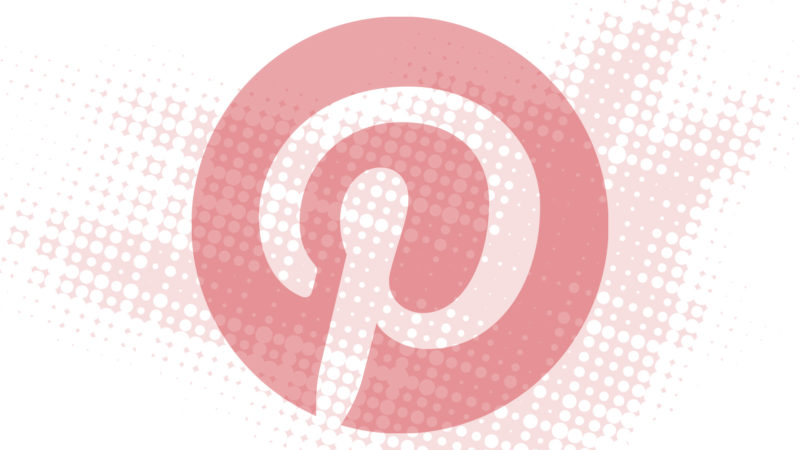Pinterest To Greatly Expand Advertising Solutions This Summer, Including A New Take On Video Ads
After a measured roll-out of Promoted Pins, the social bookmarking network aims to give marketers full-funnel advertising solutions in the coming months.
 After a slow and methodical introduction of advertising to the social network, Pinterest is planning to take several big steps to build up and round out its offerings for advertisers this summer. With the goal of meeting the marketers’ objectives throughout the marketing funnel, Pinterest announced, on Tuesday, it will be launching new features and services it says are aimed at awareness, intent and action.
After a slow and methodical introduction of advertising to the social network, Pinterest is planning to take several big steps to build up and round out its offerings for advertisers this summer. With the goal of meeting the marketers’ objectives throughout the marketing funnel, Pinterest announced, on Tuesday, it will be launching new features and services it says are aimed at awareness, intent and action.
“We are aligning pinner action with marketing objectives,” said Tim Kendall, General Manager of Monetization, a new role in which he oversees sales, marketing and product development for advertising and partner solutions.
“Sometimes users interact with Pinterest in discover mode, other times they are signaling intent by repinning or saving pins, and other times they take action by clicking on a pin or clicking through to a web site. All of this activity has specific value to marketers,” Kendall explained by phone on Monday.
Here’s a look at what else is on tap in the coming months:
A New Spin On Video Ads: First comes the splashiest of the announcements: Pinterest’s take on the video ad. Cinematic Pins are a new mobile ad format and a rebuke of what Kendall described as “interruptive and annoying” autoplay video ads, those most notably championed by Facebook. With Cinematic Pins, the movement begins as users scroll down their feed and the speed of the animation adjusts to users’ scrolling speed. The full videos play only after users click to expand the pins.
Check out our complete coverage of Cinematic Pins that set ads in motion, including examples. Several large brands have already signed on, including Banana Republic, Gap, L’Oreal USA, Nestle, Visa and Walgreens.
Audience Targeting Based What Users Plan To Do: Advertisers will be able to target Promoted Pins to users based on their interests, personal interests, or life stages. Kendall explained that the data is all built from multiple signals captured on Pinterest, including what pinners do on the platform, and does not incorporate third-party data sources.
The audiences are “based on what users tell us they want to do in the future, not in the moment or in the past,” said Kendall. And that’s a key Pinterest value proposition the company hopes to cement: that advertisers can reach people as they are forming ideas and aspirations about future plans, as opposed to searching for that pair of jeans or airplane tickets to buy right now. Or as Pinterest puts it in today’s announcement, “People do tons of different things on Pinterest, but most simply, it’s about discovering, saving and planning what to do next.”
You may recall, in January, Pinterest acquired Kosei, product recommendation software that, as a spokesperson told Marketing Land at the time, “maps the connections between people, their interest and the things they want to do in the future”.
With the new audience targeting advertisers will be able to target user groups such as foodies, travelers, or millennials.
Ad Engagement Pricing: With cost per engagement (CPE) pricing, advertisers will pay only when users take an action on a Promoted Pin, including repinning, clicking to see a pin close up or clicking through to an advertiser’s site. The CPE pricing model “will help you track future intent”.
This piece will be important for marketers that want to do more than raise awareness with campaigns on Pinterest. Advertisers will be able to track and react to performance data they get about the types of content that get users interacting with their pins.
Promoted App Pins: Pinterest debuted App pins earlier this year, soon marketers will be able to promote their app install pins on a cost-per-action (CPA) basis. This will mark Pinterest’s entry into the fast-growing app install advertising market, which is expected to hit $3 billion in the U.S. this year, up from $1.67 billion in 2014, according to eMarketer.
Self-Serve Advertising Roll-Out: Pinterest began beta-testing an auction-based CPC model last year and will roll it out generally this summer. The CPC, CPA and CPE bidding options will all be available in a self-serve interface. Promoted pins bought on CPM will continue to be sold on a reserved basis.
On the services side, the Pin Factory will provide creative studio services for brands that spend a certain amount on advertising (Pinterest isn’t disclosing that threshold publicly). This in-house service expands on the third-party Marketing Developer Partners program announced in April.
“Pinterest really is a wish book. it’s where consumers go to plan a wedding or vacation or a camping trip or a remodeling job. It’s very aspirational; sometimes they are real plans and sometimes they are ‘sometime, someday if i get the money’ plans,” Rebecca Lieb, an analyst at digital research and consulting firm, Altimeter Group, told Marketing Land, “But they really are maps of the consumer journey so I think that the fact that there will be audience segments offered is also going be be very helpful for marketers. Tying users’ actions to actual marketing objectives.”
Contributing authors are invited to create content for MarTech and are chosen for their expertise and contribution to the search community. Our contributors work under the oversight of the editorial staff and contributions are checked for quality and relevance to our readers. MarTech is owned by Semrush. Contributor was not asked to make any direct or indirect mentions of Semrush. The opinions they express are their own.
Related stories
New on MarTech